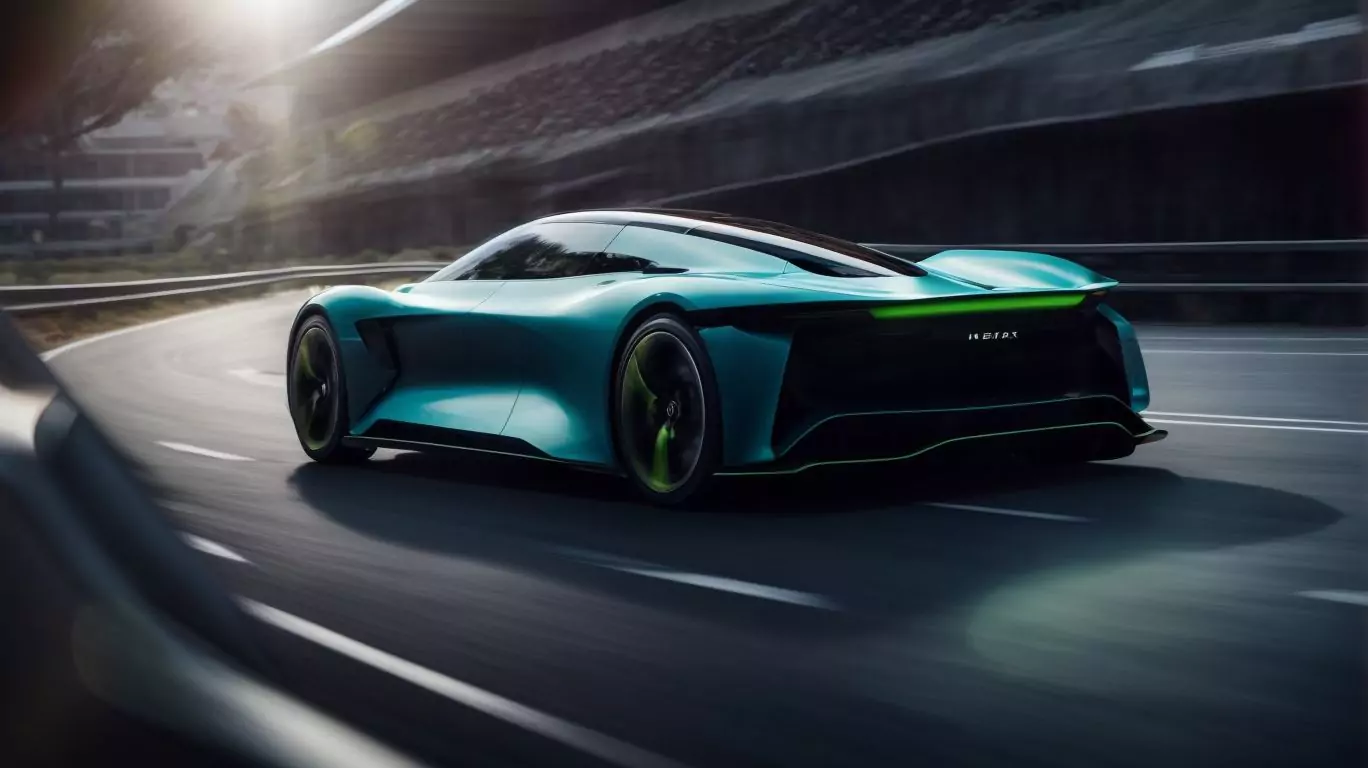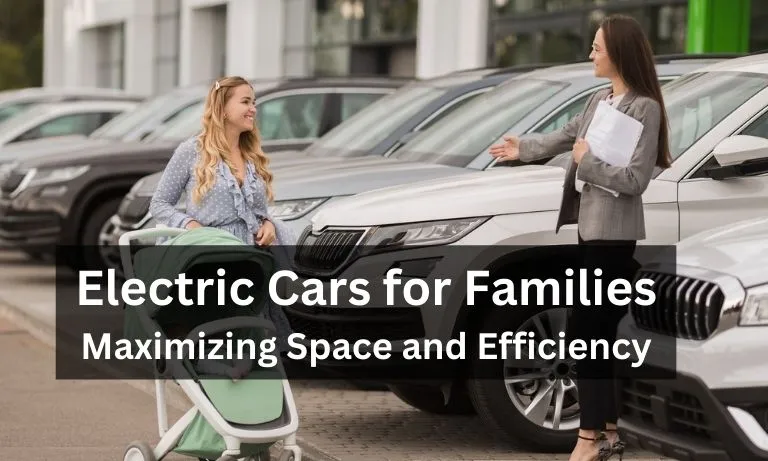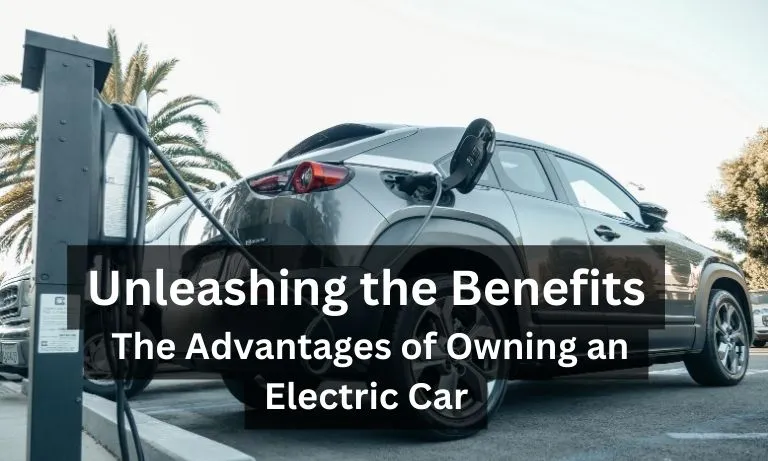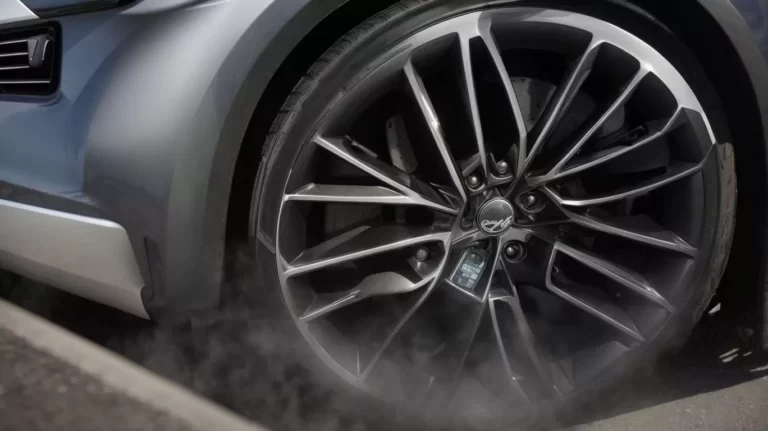The Future of Electric Cars: Anticipating What’s Ahead

Electric cars have been a hot topic in recent years, with more and more people looking for environmentally-friendly alternatives to traditional gas-powered vehicles. But what can we expect in the future of electric cars, and how will it impact you? In this article, we will delve into the exciting developments and concerns surrounding the future of electric cars.
What Are Electric Cars?
Electric cars, also known as electric vehicles (EVs), are automobiles that are powered by electricity instead of traditional internal combustion engines. These vehicles use one or more electric motors to propel them, drawing energy from rechargeable batteries. Unlike conventional cars that rely on gasoline or diesel, electric cars produce zero emissions while driving, making them environmentally friendly and reducing air pollution.
The technology behind electric cars has been continuously advancing, resulting in improved battery performance and longer driving ranges. Many major automakers have entered the electric vehicle market, offering a variety of models to suit different needs and budgets. Electric cars can be easily charged at home using a standard power outlet or at public charging stations, and some models come with fast-charging capabilities, allowing for quicker charging times.
As the demand for sustainable transportation continues to grow, the future of electric cars looks promising. With ongoing developments in battery technology and infrastructure, electric cars are expected to become even more accessible, affordable, and practical for everyday use. They provide a viable alternative to traditional gasoline-powered vehicles, contributing to a cleaner and more sustainable future.
How Do Electric Cars Work?
Electric cars are gaining popularity due to their environmentally friendly nature and cost-saving advantages. But what is the process behind how electric cars work? Here is a step-by-step explanation:
- Battery Power: Electric cars are powered by rechargeable lithium-ion batteries, which provide the necessary energy to run the vehicle.
- Electric Motor: The electric motor is responsible for turning the car’s wheels by converting electrical energy from the battery into mechanical energy.
- Controller: The controller regulates the flow of electricity from the battery to the electric motor, determining the car’s speed.
- Charging: Electric cars can be charged at home through a charging station or at public charging stations. The battery is typically recharged overnight.
- Regenerative Braking: Electric cars use regenerative braking to recharge the battery while slowing down or stopping. This process converts the kinetic energy of the moving car into electrical energy, which is then stored in the battery.
- Range and Performance: The range of an electric car refers to the distance it can travel on a full charge. The performance of electric cars is constantly improving, with newer models offering longer ranges and faster acceleration.
Understanding the inner workings of electric cars can help you make an informed decision when considering purchasing one.
What Are the Benefits of Electric Cars?
As the world shifts towards more sustainable and eco-friendly forms of transportation, electric cars have emerged as a promising solution. In this section, we will delve into the various benefits of electric cars that make them a compelling option for consumers. From reducing carbon emissions to saving money on fuel costs, we will explore the environmental, financial, and practical advantages of driving an electric car. Get ready to discover why the future is electric.
1. Environmental Benefits
Electric cars offer numerous environmental benefits, making them a greener alternative to traditional gasoline-powered vehicles. Here are some of the key environmental advantages of electric cars:
- Zero Emissions: Unlike internal combustion engine vehicles, electric cars produce no tailpipe emissions. This helps reduce air pollution and improve air quality, particularly in densely populated areas.
- Reduced Greenhouse Gas Emissions: Electric cars generate fewer greenhouse gas emissions compared to gasoline cars, even when accounting for the emissions from electricity generation. This helps combat climate change and decrease our carbon footprint.
- Energy Efficiency: Electric cars are more energy-efficient than internal combustion engine vehicles. They convert a higher percentage of stored energy into forward motion, resulting in lower overall energy consumption.
- No Noise Pollution: Electric cars operate silently, eliminating noise pollution caused by engine noise and exhaust systems. This contributes to quieter and more peaceful urban environments.
By choosing electric cars, we can contribute to a cleaner and more sustainable future by reducing pollution, conserving energy, and mitigating the impacts of climate change.
2. Cost Savings
Electric cars offer significant cost savings compared to traditional combustion engine vehicles. Here are some steps to consider for maximizing cost savings with electric cars:
- Purchase incentives: Take advantage of government incentives and tax credits available for electric vehicle purchases. These incentives can greatly reduce the upfront cost of buying an electric car.
- Lower fuel costs: Electric cars are much more energy-efficient compared to gasoline-powered cars. Charging an electric car costs significantly less than refueling a gasoline vehicle, resulting in substantial long-term savings.
- Maintenance savings: Electric cars have fewer moving parts than internal combustion engine vehicles, reducing the need for regular maintenance and costly repairs.
- Reduced emissions fees: In areas where emissions fees or congestion charges are applicable, electric cars are often exempt or pay reduced fees, leading to additional cost savings.
- Long-term savings: Over the lifespan of an electric car, the savings in fuel and maintenance costs can accumulate to thousands of dollars.
By following these steps, electric car owners can achieve significant cost savings while also enjoying the environmental benefits and convenience that electric cars offer.
3. Convenience
Electric cars offer many conveniences that make them an appealing choice for drivers. To fully take advantage of the convenience of electric cars, here are some steps to consider:
- Home charging: Install a charging station at home for easy and convenient overnight charging.
- Public charging: Make use of the growing number of public charging stations for on-the-go charging during longer trips.
- Charge scheduling: Take advantage of features that allow you to schedule charging during off-peak hours, saving you money and ensuring your car is ready when you need it.
- Remote access: Use smartphone apps to remotely monitor and control your car’s charging, pre-conditioning, and other features, adding convenience to your daily routine.
In addition to these steps, there are a few other suggestions to enhance the convenience of electric cars. Consider joining online communities or forums where you can exchange tips and experiences with other electric car owners. Also, stay updated on advancements in charging infrastructure to ensure you have access to a reliable and convenient charging network. By following these steps and suggestions, you can fully enjoy the convenience that electric cars have to offer.
What Are the Challenges Facing Electric Cars?
As electric cars continue to gain popularity and become more commonplace, it’s important to also consider the challenges that this technology faces. In this section, we will discuss the key obstacles that electric cars must overcome in order to become a viable alternative to traditional gasoline-powered vehicles. From limited driving range to the lack of infrastructure and high upfront costs, we will dive into the potential roadblocks that may hinder the widespread adoption of electric cars in the future.
1. Limited Driving Range
One of the main obstacles faced by electric cars is their limited driving range. However, there are steps you can take to alleviate this issue:
- Plan your trips: Before embarking on a journey, map out the charging stations along your route. This will ensure you have ample opportunities to recharge your vehicle and extend your driving range.
- Utilize home charging: Install a home charging station to conveniently charge your electric car overnight. This will help you start each day with a full battery and increase your driving range.
- Maximize regenerative braking: Take advantage of regenerative braking, a feature in electric cars that converts kinetic energy into electrical energy, which can be used to recharge the battery. By using regenerative braking effectively, you can extend your driving range.
- Select the right car: Consider the driving range of different electric car models when making a purchase. Some models have longer driving ranges than others, so choose one that aligns with your needs and can help mitigate the limited driving range.
- Plan for fast charging: If you need to recharge quickly, locate fast-charging stations along your route. These stations can charge your electric car to 80% capacity in a shorter amount of time and help overcome the limited driving range.
2. Lack of Infrastructure
One of the main challenges facing electric cars is the lack of infrastructure. Without a comprehensive network of charging stations, it can be difficult for owners of electric vehicles (EVs) to find convenient places to charge, particularly on longer trips. This lack of infrastructure can lead to range anxiety and discourage potential buyers from considering EVs as a viable option.
To tackle this issue, there is a need for increased investment in charging infrastructure. Governments and private entities should work together to expand the charging network, ensuring that charging stations are easily accessible and strategically located. This would help alleviate concerns about range limitations and make owning an EV more convenient.
Moreover, the development of fast-charging technology is crucial in reducing charging times and further enhancing the EV charging experience. This will encourage more people to switch to electric vehicles as they can quickly charge their cars, similar to refueling at a gas station.
3. High Upfront Costs
High upfront costs can be a significant challenge when considering electric cars. However, there are steps you can take to mitigate this issue:
- Research available incentives: Many governments offer incentives, such as tax credits or rebates, to encourage the purchase of electric vehicles. Check the incentives available in your area to help offset the initial cost.
- Compare total cost of ownership: While electric cars may have a higher upfront cost, they often have lower operating and maintenance costs compared to traditional vehicles. Consider the long-term savings in fuel and maintenance expenses.
- Explore financing options: Look into financing programs specifically designed for electric vehicles. Some manufacturers and financial institutions offer competitive interest rates and flexible repayment options to help with the high upfront costs.
- Consider used electric cars: Purchasing a used electric car can be a more affordable option. As technology improves, the resale value of older models may decrease, making them a cost-effective choice.
- Plan for long-term savings: Electric vehicles have lower fuel costs and reduced maintenance needs, resulting in long-term savings. Factor in the potential savings over the lifespan of the vehicle when considering the high upfront costs.
What Is the Current State of the Electric Car Market?
As the world moves towards more sustainable forms of transportation, electric cars have been gaining popularity and momentum. In this section, we will take a closer look at the current state of the electric car market. We will discuss the top selling electric cars and their features, as well as the global adoption rates of electric vehicles. By understanding the current landscape, we can gain insights into the future of electric cars and what to expect in terms of advancements and growth in the industry.
1. Top Selling Electric Cars
The most popular electric cars on the market are the Tesla Model 3, Nissan Leaf, and Chevrolet Bolt EV. The Tesla Model 3 has revolutionized the electric vehicle industry, dominating the global market with its impressive range, performance, and advanced features. It can travel up to 353 miles on a single charge, making it a top choice among electric car enthusiasts. The Nissan Leaf is known for its affordability and practicality, with a range of up to 226 miles. It is a popular option for daily commuting and city driving. Lastly, the Chevrolet Bolt EV offers a range of up to 259 miles and has gained popularity for its spacious interior and smooth driving experience.
These top-selling electric cars demonstrate the increasing demand for sustainable transportation options and highlight the progress being made in the electric vehicle industry. As technology continues to advance and more car manufacturers enter the market, we can expect even more impressive electric cars in the future.
2. Global Adoption Rates
The global adoption rates of electric cars have been steadily increasing in recent years, driven by several factors:
- Government initiatives: Many countries have implemented policies and incentives to promote the adoption of electric vehicles, such as tax credits, rebates, and subsidies.
- Improved charging infrastructure: The expansion of charging networks has made it more convenient for electric car owners to charge their vehicles, reducing range anxiety.
- Technological advancements: The development of more efficient batteries and longer driving ranges has increased the appeal and practicality of electric cars.
- Environmental consciousness: Growing concerns about climate change and air pollution have raised awareness about the environmental benefits of electric vehicles, leading more people to choose them as a greener transportation option.
A true story that highlights the impact of these factors is the case of Norway. With strong government support, extensive charging infrastructure, and attractive incentives, Norway has achieved one of the highest global adoption rates for electric cars. In 2020, electric cars accounted for over 54% of new car sales in Norway, demonstrating the success of their efforts in promoting sustainable transportation.
What Can We Expect for the Future of Electric Cars?
As electric cars continue to gain popularity, the future of this technology is constantly evolving. In this section, we will discuss what we can expect for the future of electric cars. From advancements in battery technology to increased government support, there are many factors that will shape the future of electric cars. We will also explore the potential for more affordable options and the expansion of charging infrastructure, both of which are crucial for the widespread adoption of electric vehicles. So, let’s dive into what the future holds for electric cars.
1. Advancements in Battery Technology
Advancements in battery technology have played a crucial role in the development and growth of electric cars. These advancements have led to improvements in battery capacity, charging times, and overall performance. Here are some key steps in the advancements of battery technology:
- Lithium-ion batteries: The introduction of lithium-ion batteries revolutionized the electric car industry. These batteries offer higher energy density, longer driving ranges, and faster charging times compared to previous battery technologies.
- Battery management systems: The development of sophisticated battery management systems has enhanced the efficiency and safety of electric car batteries. These systems monitor and regulate the battery’s performance, ensuring optimal operation and preventing issues like overcharging or overheating.
- Improved energy density: Researchers and engineers have been working on increasing the energy density of batteries, allowing them to store more energy in a smaller and lighter package. This has led to electric cars with longer driving ranges and improved overall performance.
- Fast charging technology: Advancements in fast charging technology have significantly reduced charging times for electric cars. With high-power charging stations becoming more prevalent, electric car owners can now recharge their vehicles quickly, making long-distance travel more convenient.
Pro-tip: Keep an eye on the latest advancements in battery technology, as they can lead to even better electric car performance and make owning an electric car an even more attractive option.
2. Increased Government Support
Increased government support is essential for the widespread adoption of electric cars. Here are some measures that governments can take to provide this support:
- Financial incentives: Governments can offer tax credits, rebates, or subsidies to make electric cars more affordable for consumers. These incentives can significantly reduce the upfront costs of purchasing an electric vehicle.
- Development of charging infrastructure: Governments can invest in expanding charging infrastructure, ensuring that electric car owners have convenient access to charging stations. This can involve installing charging points in public areas, workplaces, and residential areas.
- Funding for research and development: Governments can allocate funds for research and development initiatives focused on improving battery technology, a key component of electric cars. This support can lead to advancements in battery efficiency, range, and charging speed.
- Regulatory measures: Governments can implement regulations that promote the adoption of electric cars, such as setting emissions standards or providing preferential treatment for electric vehicles in terms of parking or toll fees.
- Public education campaigns: Governments can launch public education campaigns to raise awareness about the benefits of electric cars and dispel any misconceptions. This can encourage more consumers to consider electric cars as a viable alternative to traditional combustion engine vehicles.
By implementing these measures, governments can create an environment that promotes the growth and adoption of electric cars, leading to a cleaner and more sustainable transportation future.
3. More Affordable Options
As the electric car market continues to grow, there are more affordable options becoming available to consumers. Here are some steps to consider when looking for more affordable electric car options:
- Research different electric car models: Compare the prices and features of various electric car models to find ones that fit within your budget.
- Consider used electric cars: Used electric cars can be a more affordable option compared to buying a brand new one. Look for certified pre-owned electric cars that come with warranties and have been inspected for quality.
- Look for incentives and rebates: Many governments and local authorities offer incentives and rebates for purchasing electric cars. Check for any available discounts or tax credits that can help offset the cost.
- Explore lease options: Leasing an electric car can be a cost-effective way to drive one without the large upfront cost of buying. Look for lease deals that offer competitive rates and favorable terms.
- Consider the total cost of ownership: While electric cars may have a higher upfront cost, they can save you money in the long run due to lower fuel and maintenance costs. Consider the overall cost of owning an electric car, including savings on fuel and maintenance, to determine if it is a more affordable option for you.
4. Expansion of Charging Infrastructure
In order to promote the widespread adoption of electric cars, it is crucial to expand the charging infrastructure. Here are some steps that can help facilitate this expansion:
- Investment in charging stations: Governments and private companies should invest in the installation of charging stations in public places, workplaces, and residential areas to ensure convenient access for electric car owners.
- Standardization of charging systems: Implementing standardized charging systems will ensure compatibility and ease of use for electric car owners, making it more convenient for them to charge their vehicles.
- Integration with renewable energy sources: It is important for the charging infrastructure to be integrated with renewable energy sources in order to reduce the carbon footprint of electric vehicles and promote sustainable transportation.
- Expansion of fast-charging networks: To alleviate range anxiety and encourage long-distance travel, it is crucial to establish a network of fast-charging stations along major highways and travel routes.
Fact: As of 2020, there were over 1.3 million charging stations worldwide, with China having the largest number, followed by the United States and Europe.






